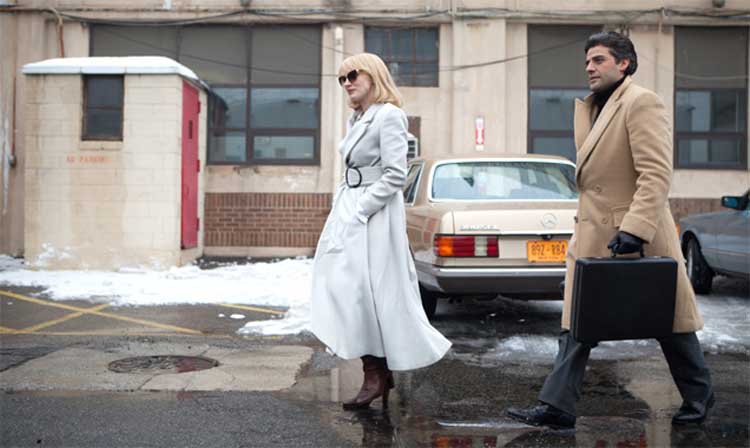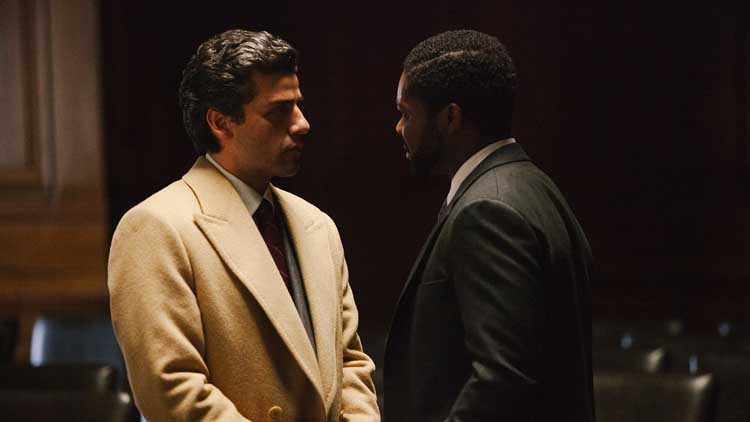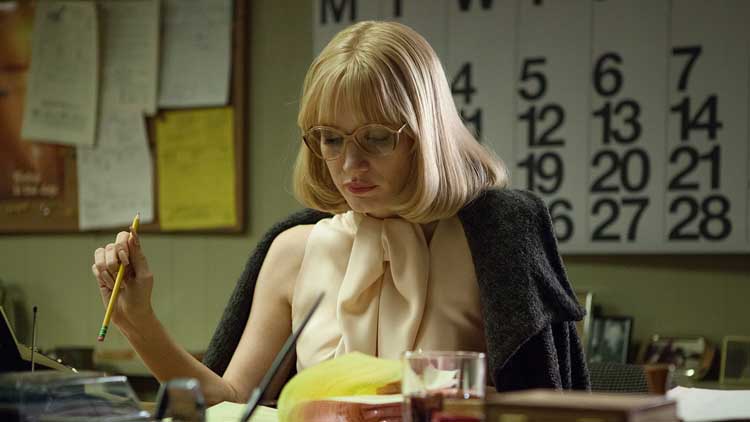A MOST VIOLENT YEAR review by Josef Rodriguez.
Upon releasing his third feature, A Most Violent Year, JC Chandor proves that he is the most talented chameleon working in cinema today. Debuting with an ensemble drama about the 2008 financial crisis and moving into a one-man show about a sailor lost at sea, Chandor’s third film chronicles, contrary to his title, a particularly trying month for Abel Morales (Oscar Isaac), an honest, respectable oil purveyor in New York City during 1981, the most violent year on record.
Accompanied by his wife and business partner Anna (Jessica Chastain), as well as his lawyer Andrew (Albert Brooks), Chandor’s film opens with Abel signing an agreement for a nearby property owned by a family of Hassidic Jews. Asking why he wouldn’t rather lease the property, Abel clarifies that he likes to own the things he uses. Having already put down 40%, Abel has 30 days to come up with the rest of the money or the property goes back on the market and he does not get a refund on his investment.

Of course, Abel, who has followed every single standard business practice by the book for his entire career, is about to have one of the worst months of his life. The growing number of truck thefts have left his drivers afraid to make their rounds, resulting in over 100,000 gallons of stolen oil. Meanwhile, an investigation by the DA forces Abel and Anna to double- and triple-check the books for any foul play. As Abel’s problems begin intensifying beyond his control, he realizes that he may not be able to make his payment on time and, like he always has, relies on his words and not his fists to get the job done.
A title like A Most Violent Year will undoubtedly set some expectations, as it did for me, with a nation of moviegoers as bloodthirsty as ours. But anyone can easily see that, although Chandor’s film is rated R, its MPAA classification writes that there is only “some violence.” This is the first of many ingenious contradictions offered throughout Chandor’s film, which ends up being one of the most thought-provoking and quietly haunting films of 2014.

Anchored by two powerhouse performances from Oscar Isaac and Jessica Chastain, Chandor’s seemingly effortless ear for dialogue rolls of their tongues with a liquid fire so rarely seen in contemporary cinema. In an age where we value subtlety and hushed tones in our independent filmmaking more than ever, it’s refreshing to see something with an audible power more akin to the films of Sidney Lumet and Paddy Chayefsky. As much as I can appreciate a Tarantino or a Sorkin, their material is often so genre-specific, and many standard American dramas just don’t come equipped with a proper screenplay anymore.
The film also looks great, utilizing color in a way that won’t exactly have any critics flocking to the keyboard to gush over how colorful it was. Instead, Chandor really captures the tones of the city extremely well, and the palette reflects that perfectly: it’s almost palpable. Close-ups on certain, particularly grimy individuals have the tendency to evoke phantom scents of liquor breath and after shave. Chandor focuses less on what a film about New York in 1981 should look and sound like, and more on how New York in 1981 actually was.

However, one aspect of A Most Violent Year that needs to be highlighted is the subtextual arc of Abel’s character. His general conceit is, put simply, that violence is never the answer. At the screening I attended, there was a particularly vocal man directly behind me who called out to the screen whenever Abel took the path that was, as he called it, “most right.” Time and time again Abel takes the high road and handles things in a dignified manner…and the guy behind me just couldn’t stand it.
In the United States, more so than any other nation in the world, we like our heroes to be loud, belligerent, violent, and ruthless. We feel nothing but unadulterated joy when our favorite superhero smashes through an entire city to loudly and publicly defeat the villain they’ve been chasing for three straight hours. And, as much as viewers may feel obligated to witness that violent catharsis at some point in A Most Violent Year, the only time it really comes is in the form of a suicide by a character we’ve followed throughout the entire film.
If Chandor takes more narrative detours than necessary to make his point, the point he does make is important and worthy of discussion. He’s got a finger on the pulse of American pop culture, and it seems like A Most Violent Year does everything in its power to separate itself from that formula. It’s talky and long, and it builds at a pace that some would call laborious (others would call it downright boring), but it does so in the service of a theme that isn’t explored much anymore in American cinema. And it should be.
A MOST VIOLENT YEAR is now playing in theaters nationwide.





